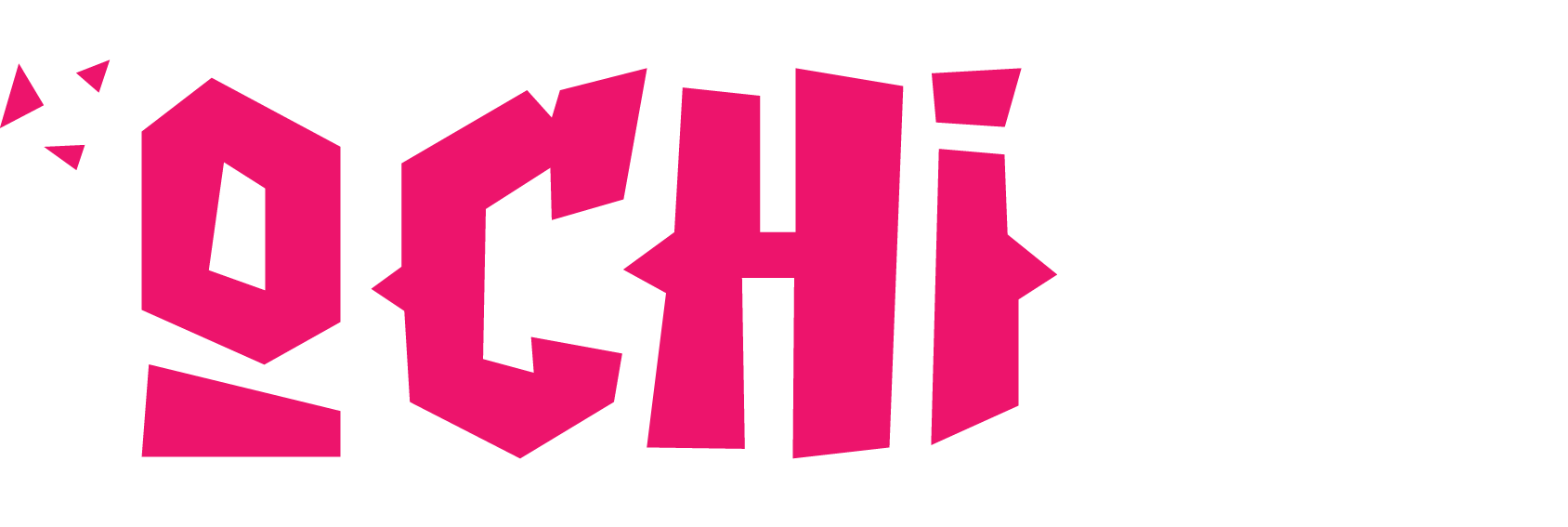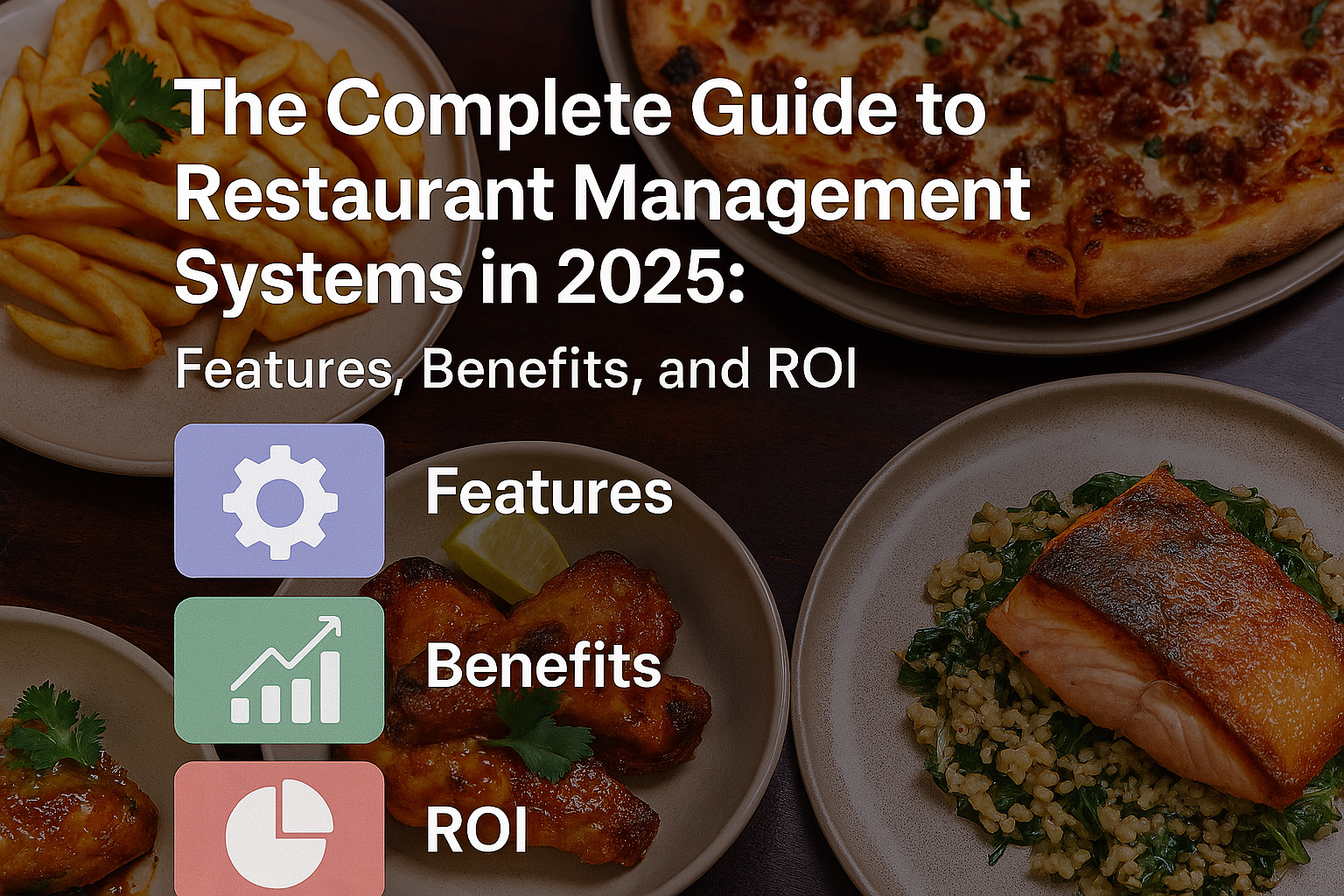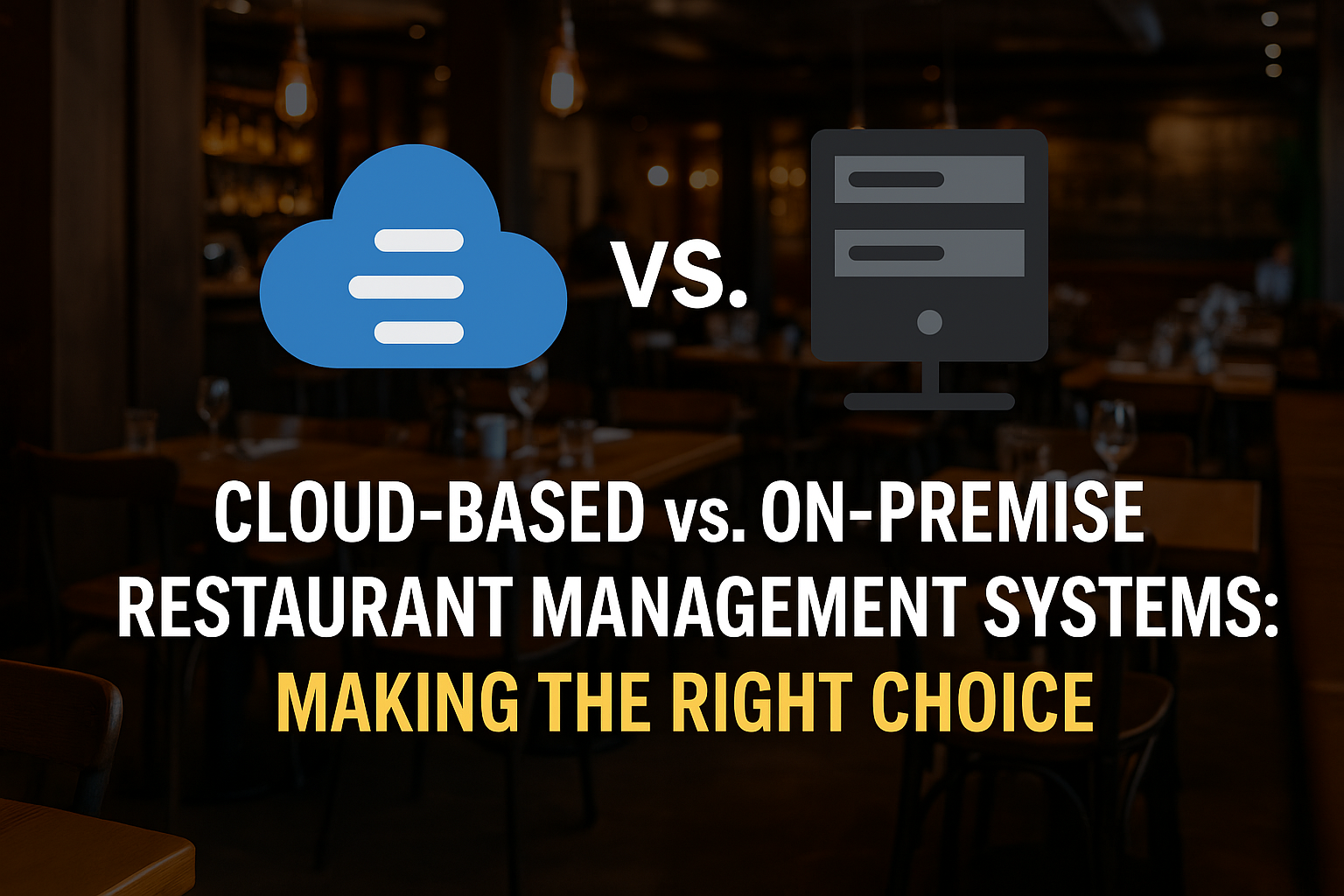In today's competitive restaurant landscape, efficiency and customer experience are paramount to success. Restaurant Management Systems (RMS) have evolved from simple cash registers to comprehensive platforms that integrate every aspect of food service operations. This guide explores how modern RMS solutions are transforming restaurants in 2025, helping owners and managers streamline operations, increase revenue, and deliver exceptional dining experiences.
Whether you're opening your first restaurant or managing a multi-location enterprise, understanding the capabilities and benefits of a robust RMS is crucial for staying competitive in the evolving food service industry.
What is a Restaurant Management System?
A Restaurant Management System (RMS) is a comprehensive software solution designed to streamline and automate key restaurant operations. Unlike traditional point-of-sale (POS) systems that focus primarily on processing transactions, modern RMS platforms provide end-to-end management capabilities across all aspects of restaurant operations.
The core of an RMS typically includes:
- Point of Sale (POS): Processing orders and payments
- Inventory Management: Tracking stock levels and automating purchasing
- Menu Management: Updating menus and pricing across all channels
- Staff Management: Scheduling, time tracking, and performance monitoring
- Customer Relationship Management: Managing guest data and loyalty programs
- Reporting and Analytics: Generating insights on sales, costs, and performance
- Online Ordering: Managing orders from websites and third-party platforms
- Reservation Systems: Handling table bookings and waitlist management
Modern RMS solutions are increasingly cloud-based, allowing restaurant operators to access vital information and manage operations from anywhere, at any time, using any device with internet connectivity.
Core Features of Modern RMS Solutions
1. Advanced Point of Sale (POS)
The POS component remains the heart of any RMS, but today's systems offer far more than simple order entry and payment processing:
- Intuitive Order Management: User-friendly interfaces allow staff to input orders quickly and accurately, with customization options and modifiers
- Table Management: Digital floor plans that track table status, turn times, and server assignments
- Split Billing and Tab Management: Flexible payment options for customers
- Multi-Payment Support: Accepting various payment methods including contactless, mobile, and cryptocurrency
- Kitchen Display Systems (KDS): Digital screens replacing paper tickets, improving kitchen efficiency
2. Comprehensive Inventory Management
Modern inventory systems have evolved to provide real-time visibility and control:
- Real-time Stock Tracking: Automatic inventory depletion based on sales
- Vendor Management: Tracking supplier information, orders, and performance
- Low Stock Alerts: Automated notifications when inventory reaches preset thresholds
- Recipe Costing: Calculating precise food costs based on ingredient usage
- Waste Tracking: Monitoring and reducing food waste
- Purchase Order Automation: Generating orders based on inventory levels and sales forecasts
3. Staff Management and Scheduling
Employee management features help optimize labor costs and improve staff performance:
- Intelligent Scheduling: Creating staff schedules based on forecasted demand
- Time and Attendance: Digital clock-in/out with biometric verification
- Performance Metrics: Tracking server sales, tips, and customer satisfaction
- Training Modules: Onboarding and continuous education tools
- Communication Tools: Integrated messaging for team coordination
- Labor Cost Optimization: Analyzing labor costs as a percentage of sales
4. Customer Relationship Management
Building customer loyalty through personalized experiences:
- Guest Profiles: Storing customer preferences, allergies, and order history
- Loyalty Programs: Points-based or tiered rewards systems
- Targeted Marketing: Personalized promotions based on customer behavior
- Feedback Collection: Digital surveys and review management
- Reservation Management: Tracking guest preferences and special occasions
5. Reporting and Analytics
Data-driven decision making through comprehensive insights:
- Real-time Dashboards: Visual representations of key performance indicators
- Sales Analysis: Detailed breakdowns by time period, menu item, server, etc.
- Inventory Reports: Usage patterns, waste metrics, and cost analysis
- Labor Reports: Productivity metrics and labor cost percentages
- Customer Insights: Spending patterns, visit frequency, and preferences
- Predictive Analytics: Sales forecasting and trend identification
6. Multi-Channel Order Management
Streamlining orders from all sources:
- Integrated Online Ordering: Direct website and app orders
- Third-party Delivery Integration: Consolidating orders from platforms like DoorDash, Uber Eats, etc.
- Delivery Management: Driver assignment, route optimization, and status tracking
- Menu Synchronization: Automatic updates across all ordering channels
- Order Status Tracking: Real-time updates for customers
7. Marketing and Promotion Tools
Driving revenue through targeted campaigns:
- Email Marketing: Automated campaigns based on customer behavior
- SMS Notifications: Promotional alerts and order updates
- Social Media Integration: Managing presence across platforms
- Discount and Coupon Management: Creating and tracking promotional offers
- Event Management: Planning and marketing special occasions
Benefits of Implementing an RMS
Operational Efficiency
- Reduced Manual Work: Automation of routine tasks saves staff time
- Streamlined Workflows: Integrated systems eliminate redundant processes
- Faster Table Turnover: Efficient ordering and payment processing
- Inventory Optimization: Reduced waste and carrying costs
- Labor Optimization: Scheduling staff according to actual needs
Financial Performance
- Increased Revenue: Upselling prompts and promotional tools drive higher check averages
- Reduced Costs: Better inventory and labor management lowers operating expenses
- Improved Profit Margins: Recipe costing and menu engineering optimize profitability
- Controlled Theft and Loss: Better tracking of inventory and transactions
- Accurate Financial Reporting: Real-time insight into restaurant performance
Enhanced Customer Experience
- Faster Service: Streamlined ordering and payment processes
- Order Accuracy: Reduced errors in communication between front-of-house and kitchen
- Personalization: Recognition of returning customers and their preferences
- Convenient Ordering Options: Multiple channels for ordering based on customer preference
- Loyalty Rewards: Programs that encourage repeat business
Data-Driven Decision Making
- Menu Optimization: Identifying best and worst-performing items
- Pricing Strategy: Setting prices based on cost and demand data
- Staffing Decisions: Scheduling based on historical patterns
- Marketing Effectiveness: Measuring campaign performance
- Business Expansion: Making informed decisions about growth
Types of Restaurant Management Systems
Cloud-Based RMS
- Advantages: Lower upfront costs, automatic updates, remote access, scalability
- Considerations: Requires reliable internet connection, ongoing subscription costs
- Best For: Modern restaurants of all sizes, multi-location operations
On-Premise RMS
- Advantages: Works without internet connection, one-time purchase, complete data control
- Considerations: Higher upfront costs, manual updates, limited remote access
- Best For: Locations with unreliable internet, restaurants with specific security requirements
Hybrid Systems
- Advantages: Combines benefits of both approaches, works offline with cloud synchronization
- Considerations: More complex setup and maintenance
- Best For: Operations requiring constant uptime with intermittent connectivity
Mobile RMS
- Advantages: Extreme flexibility, lower hardware costs, tableside ordering and payment
- Considerations: Device management, battery life, potential durability issues
- Best For: Quick-service, food trucks, pop-ups, tableside service restaurants
Enterprise RMS
- Advantages: Advanced multi-location management, centralized control, sophisticated analytics
- Considerations: Higher costs, more complex implementation
- Best For: Restaurant groups, franchises, large chains
Integrations That Enhance RMS Functionality
Payment Processing
- Credit card processors
- Mobile payment platforms
- Contactless payment systems
- Cryptocurrency processors
Accounting and Finance
- QuickBooks, Xero, Sage
- Payroll systems
- Tax filing solutions
- Banking connections
Online Ordering and Delivery
- Third-party delivery platforms (Uber Eats, DoorDash, etc.)
- Direct online ordering systems
- Delivery management software
- Order aggregation platforms
Reservation and Waitlist Management
- OpenTable, Resy, Tock
- Virtual waitlist systems
- Table management software
- Host stand solutions
Kitchen Production
- Kitchen display systems (KDS)
- Recipe management software
- Quality control systems
- Production forecasting tools
Customer Engagement
- CRM platforms
- Loyalty program software
- Marketing automation tools
- Customer feedback systems
Supply Chain Management
- Vendor management systems
- Procurement platforms
- Delivery tracking systems
- Quality control solutions
Selecting the Right RMS for Your Restaurant
Assess Your Restaurant's Needs
- Operation Type: Quick-service, full-service, fine dining, etc.
- Size and Volume: Number of tables, covers, transactions
- Pain Points: Specific operational challenges to address
- Growth Plans: Future expansion or concept changes
- Budget Constraints: Available investment for technology
Key Selection Criteria
- Ease of Use: Intuitive interface for staff at all technical levels
- Reliability: Uptime guarantees and offline functionality
- Scalability: Ability to grow with your business
- Support Quality: Availability of training and technical assistance
- Integration Capabilities: Compatibility with existing or desired systems
- Mobile Functionality: Remote management capabilities
- Data Security: Protection of sensitive customer and business information
- Total Cost of Ownership: Hardware, software, implementation, and ongoing costs
Evaluation Process
- Define Requirements: Document must-haves vs. nice-to-haves
- Research Options: Identify systems that match your requirements
- Request Demos: See systems in action with your specific scenarios
- Check References: Speak with restaurants similar to yours using the system
- Analyze Costs: Compare total cost of ownership over 3-5 years
- Test Usability: Allow key staff to try the system if possible
- Review Contracts: Understand terms, especially regarding data ownership
Implementation Best Practices
Planning Phase
- Set Clear Objectives: Define specific goals for the implementation
- Create a Timeline: Establish realistic milestones
- Assign Responsibilities: Determine who will lead various aspects
- Prepare Data: Organize menu items, recipes, inventory, and customer information
Training Strategy
- Tiered Approach: Train managers first, then have them assist with staff training
- Role-Based Training: Focus on features relevant to each position
- Hands-On Practice: Provide ample time for practice before going live
- Reference Materials: Create quick guides and process documentation
- Ongoing Education: Schedule regular refresher sessions
Go-Live Strategy
- Consider Timing: Choose a slower business period if possible
- Phased Approach: Consider implementing core features first, then expanding
- Backup Plans: Have contingency procedures ready for any issues
- Extra Support: Ensure vendor or internal experts are available during transition
- Monitor Closely: Track key metrics to identify and address any problems quickly
Post-Implementation
- Regular Reviews: Schedule system performance assessments
- Feedback Collection: Gather input from staff and customers
- Optimization: Fine-tune configurations based on actual usage
- Feature Expansion: Gradually implement additional capabilities
- Continuous Training: Maintain knowledge as staff changes and features evolve
Measuring ROI from Your RMS Investment
Key Performance Indicators
- Labor Cost Percentage: Track reduction in staff hours or improved productivity
- Food Cost Percentage: Measure reduction in waste and inventory carrying costs
- Table Turnover Rate: Monitor improvements in service efficiency
- Average Check Size: Track increases from upselling and improved order accuracy
- Customer Retention Rate: Measure impact on repeat business
- Order Processing Time: Track reduction in time from order to service
- Staff Turnover: Monitor changes in employee satisfaction and retention
Calculation Method
- Baseline Establishment: Document metrics before implementation
- Ongoing Measurement: Track same metrics at regular intervals after implementation
- Cost Analysis: Calculate total cost of ownership (TCO)
- Benefit Quantification: Assign monetary values to improvements
- ROI Calculation: (Total Benefits - Total Costs) / Total Costs × 100%
Typical ROI Timeline
- Immediate Benefits: Order accuracy, payment processing efficiency
- Short-term Returns (1-3 months): Inventory optimization, labor scheduling improvements
- Medium-term Returns (3-6 months): Customer loyalty impact, marketing effectiveness
- Long-term Returns (6+ months): Strategic decision-making improvements, brand reputation
Future Trends in Restaurant Management Technology
Artificial Intelligence and Machine Learning
- Demand Forecasting: Predicting busy periods with increasing accuracy
- Inventory Optimization: Suggesting order quantities based on multiple factors
- Menu Engineering: Recommending item changes based on profitability and popularity
- Customer Personalization: Tailoring experiences based on individual preferences
Contactless Technology
- QR Code Ordering: Table-specific digital menus
- Mobile Payment Expansion: More payment options without physical contact
- Voice-Activated Systems: Hands-free operation for kitchen and management functions
- Automated Pickup Systems: Smart lockers and pickup stations
Robotics and Automation
- Kitchen Automation: Cooking robots for repetitive tasks
- Service Robotics: Robotic food runners and bussers
- Inventory Robots: Automated stock counting and organization
- Cleaning Automation: Self-cleaning equipment and facilities
Advanced Analytics
- Predictive Business Intelligence: Forecasting beyond simple sales trends
- Competitive Analysis: Benchmarking against similar operations
- Customer Journey Mapping: Understanding the complete guest experience
- Scenario Planning: Testing business decisions virtually before implementation
Sustainability Tools
- Food Waste Tracking: Advanced monitoring and reduction tools
- Energy Management: Smart systems to reduce utility consumption
- Sustainable Sourcing: Tools to identify and verify ethical suppliers
- Carbon Footprint Calculation: Measuring and reporting environmental impact
Frequently Asked Questions
How much does a typical restaurant management system cost?
The cost of an RMS varies widely based on features, restaurant size, and deployment model. Cloud-based systems typically range from $69-$399 per month per location, with potential additional costs for hardware, implementation, and training. On-premise systems may require larger upfront investments of $3,000-$25,000 but have lower ongoing costs.
How long does it take to implement a new RMS?
Implementation timelines vary based on restaurant complexity and system features. Basic setups can be completed in 2-4 weeks, while comprehensive enterprise implementations may take 2-3 months. Key factors affecting timeline include data migration, integration requirements, staff availability for training, and customization needs.
Can I keep using my existing hardware with a new RMS?
Many modern RMS solutions are compatible with standard hardware, though they may have minimum specifications. Cloud-based systems generally offer more flexibility with hardware choices. It's important to verify compatibility for specific items like receipt printers, kitchen display systems, and payment terminals. Some legacy hardware may require upgrades or replacements.
How do restaurant management systems handle outages or internet connectivity issues?
Most cloud-based systems now offer offline modes that allow basic operations to continue during internet outages, with data syncing when connectivity returns. On-premise systems typically function normally during outages but may lose remote access capabilities. Hybrid systems offer the best of both worlds with local operation and cloud synchronization.
What security measures are in place to protect customer data?
Reputable RMS providers implement multiple security layers including encryption of data both in transit and at rest, PCI DSS compliance for payment processing, role-based access controls, regular security audits, and data backup protocols. When evaluating systems, restaurants should inquire about specific security certifications and compliance standards.
Can I integrate my existing third-party delivery platforms with an RMS?
Most modern RMS solutions offer integration with popular third-party delivery platforms like Uber Eats, DoorDash, and Grubhub. These integrations allow orders to flow directly into the restaurant's system without requiring separate tablets or manual re-entry. The level of integration can vary, from basic order acceptance to complete menu synchronization across platforms.
How do restaurant management systems handle multiple locations?
Enterprise-grade RMS solutions provide consolidated management of multiple locations through features like centralized menu management, cross-location inventory visibility, standardized reporting, staff management across venues, and unified customer databases. They allow both location-specific customization and group-wide policy enforcement.
Final Thoughts
The right restaurant management system is no longer a luxury but a necessity for food service businesses aiming to remain competitive in 2025 and beyond. By centralizing operations, automating routine tasks, and providing actionable insights, a modern RMS empowers restaurant owners and managers to focus on what matters most: delivering exceptional food and service to their guests.
When selecting and implementing an RMS, take the time to thoroughly assess your specific needs, evaluate available options, and plan for a successful transition. The initial investment in time and resources will pay dividends through improved efficiency, reduced costs, enhanced customer experiences, and ultimately, increased profitability.
As technology continues to evolve, restaurants that embrace these innovations will be best positioned to adapt to changing consumer expectations and market conditions. Whether you're considering your first RMS or looking to upgrade an existing system, the guidance in this article provides a foundation for making informed decisions that will benefit your restaurant for years to come.
About Ochi
Ochi.ma provides a comprehensive restaurant management system designed for modern food service operations. Our cloud-based platform integrates all aspects of restaurant management, from POS and inventory to staff scheduling and customer engagement. With intuitive interfaces, powerful analytics, and seamless third-party integrations, Ochi.ma helps restaurants of all sizes optimize operations, reduce costs, and deliver exceptional dining experiences.
To learn more about how Ochi.ma can transform your restaurant operations, request a demo or contact our sales team at [email protected].



